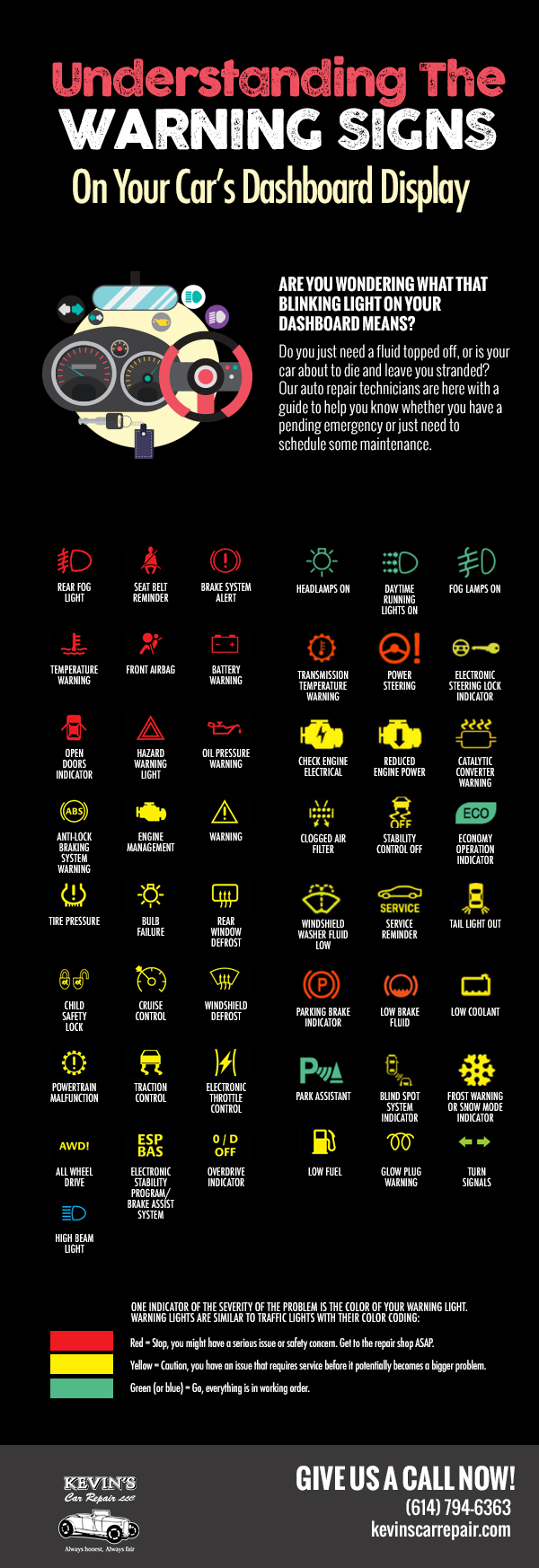Comprehending The Definition Behind Your Car'S Caution Lights: A Comprehensive Appearance
Comprehending The Definition Behind Your Car'S Caution Lights: A Comprehensive Appearance
Blog Article
Content Author-Lim Forbes
When you lag the wheel, those beautiful warning lights on your control panel can be a bit perplexing. Do you know what they're trying to tell you regarding your vehicle's health and wellness? Understanding the importance of these lights is important for your safety and security and the long life of your vehicle. So, the following time one of those lights pops up, wouldn't you intend to decode its message precisely and take the needed actions to resolve it?
Common Warning Lights and Interpretations
Recognize usual warning lights in your vehicle and recognize their meanings to ensure safe driving.
The most common warning lights include the check engine light, which indicates problems with the engine or emissions system. If this light comes on, it's essential to have your automobile inspected promptly.
The oil pressure alerting light shows low oil pressure, requiring prompt focus to avoid engine damages.
A blinking battery light may recommend a damaged billing system, potentially leaving you stranded if not addressed.
The tire stress tracking system (TPMS) light informs you to reduced tire stress, impacting vehicle security and gas effectiveness. Overlooking this might cause unsafe driving conditions.
The ABS light indicates a trouble with the anti-lock stopping system, endangering your capacity to quit quickly in emergencies.
Finally, the coolant temperature level warning light warns of engine getting too hot, which can result in serious damages if not solved promptly.
Understanding these usual caution lights will certainly aid you resolve concerns immediately and keep secure driving conditions.
Significance of Prompt Attention
Understanding the common caution lights in your auto is just the primary step; the relevance of quickly attending to these warnings can't be emphasized enough to ensure your safety and security when traveling.
When car paint correction brightens on your dashboard, it's your automobile's way of communicating a prospective concern that needs focus. Overlooking these warnings can result in much more severe problems later on, jeopardizing your security and possibly costing you a lot more in repairs.
Motivate interest to warning lights can stop breakdowns and accidents. As click the up coming web page , a blinking check engine light can show a misfire that, if left ignored, could create damage to the catalytic converter. Resolving this promptly can conserve you from a pricey fixing.
Similarly, a brake system warning light may signify reduced brake liquid or worn brake pads, vital parts for your safety and security when driving.
Do It Yourself Troubleshooting Tips
If you discover a warning light on your dashboard, there are a few DIY troubleshooting ideas you can attempt before looking for specialist help.
The primary step is to consult your vehicle's handbook to comprehend what the specific warning light indicates. Occasionally the issue can be as simple as a loosened gas cap triggering the check engine light. Tightening the gas cap might resolve the issue.
https://oil-near-me62738.blog-ezine.com/31309603/interpreting-your-auto-s-alert-lights-their-real-effects is a low battery, which can trigger different alerting lights. Inspecting the battery links for rust and guaranteeing they're secure could take care of the problem.
If a warning light continues, you can try resetting it by disconnecting the car's battery for a couple of minutes and after that reconnecting it. In addition, examining your vehicle's fluid levels, such as oil, coolant, and brake liquid, can help troubleshoot advising lights related to these systems.
Conclusion
In conclusion, comprehending your auto's warning lights is vital for maintaining your lorry running smoothly and securely. By quickly attending to these notifies and recognizing what they indicate, you can prevent expensive repair services and prospective breakdowns.
Bear in mind to consult your vehicle's guidebook for certain information on each warning light and act appropriately to make sure a trouble-free driving experience.
Remain educated, stay risk-free on the road!
